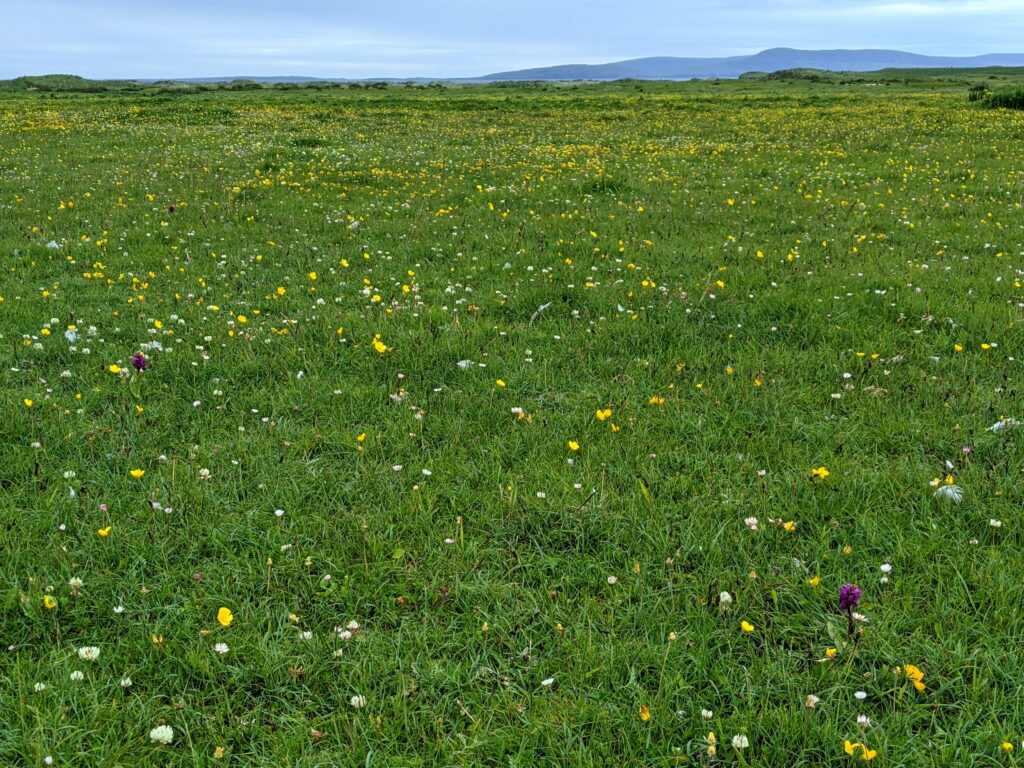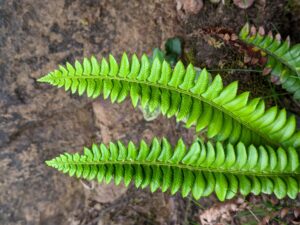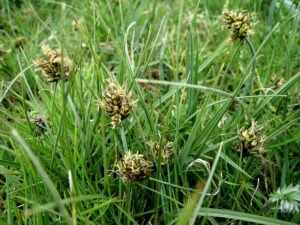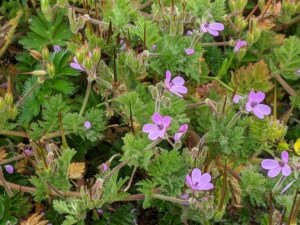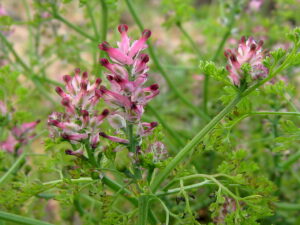2021 County Report for Orkney
John Crossley
Many enjoyable and productive outings this year, and some good finds. Our local Flora Group held meetings at an outstanding area of unimproved neutral grassland at Ring of Brodgar stone circle and another on sandy beach and dune. In July I went to North Ronaldsay to contribute to their island Science Festival, with guided walks on dune grassland and coastal heath; we found abundant Carex maritima (Curved Sedge) at three sites (not all dune grassland), Coeloglossum viride (Frog Orchid) and both Ophioglossum azoricum (Small Adder's-tongue) and O. vulgatum (Common A-t). Islanders and visitors were more impressed however with patches of Erodium cicutarium (Common Stork’s-bill) in flower, a very scarce plant in the far north.
Some other events have not been so happy. I and others had objected to a large wind farm proposal on Hoy. The site has many vulnerable species and habitats and is in a Wild Area. The independent reporter to the Scottish government recommended refusal but was over-ruled by ministers. It was distressing also to see elsewhere a sand dune site which had harboured Carex maritima and Juncus balticus (Baltic Rush) destroyed.
I did some recording on the summits and ridges of Hoy; these are only 350-450 m in altitude, but decidedly montane in character, with sparsely vegetated feldfields of loose rock and gravel. Arctostaphylos alpinus (Arctic Bearberry), Carex bigelowii (Stiff Sedge), and Salix herbacea (Least Willow) are frequent. It will be interesting to compare with results from higher elevations further south. It was exciting to find a long-lost site for Polystichum lonchitis (Holly Fern) on the way up.
